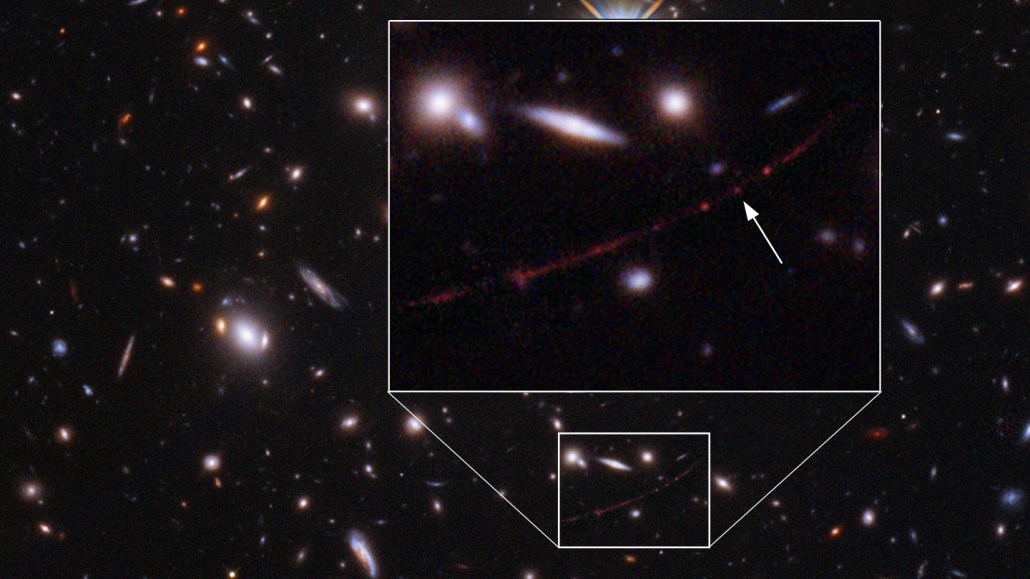
A newfound possible star (arrow) is from the universe’s first 900 million years, researchers say. It’s only visible because of an intervening galaxy cluster, which magnifies the light of this object and a background galaxy, seen as the red arc.
SCIENCE: NASA, ESA, Brian Welch/JHU, Dan Coe/STScI; IMAGE PROCESSING: NASA, ESA, Alyssa Pagan/STScI







